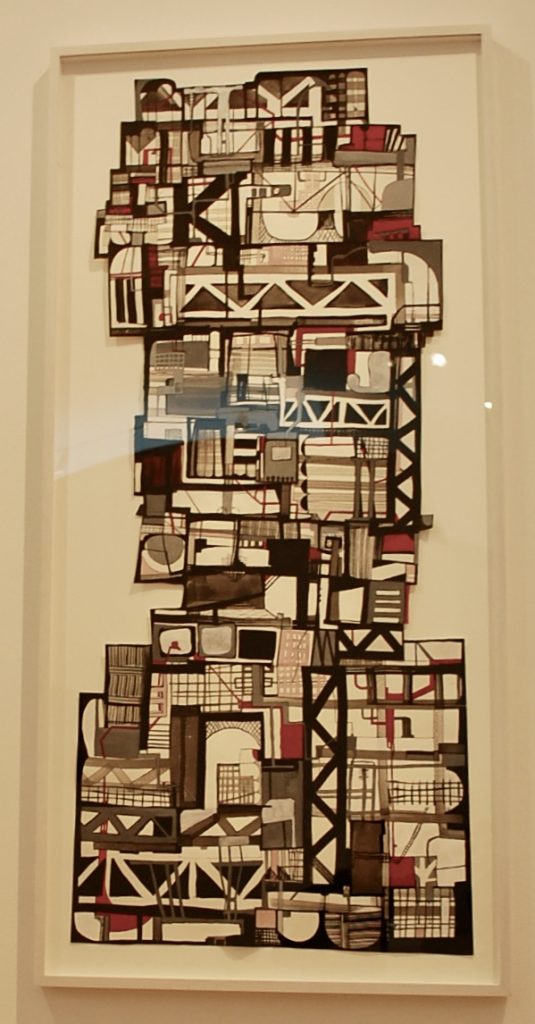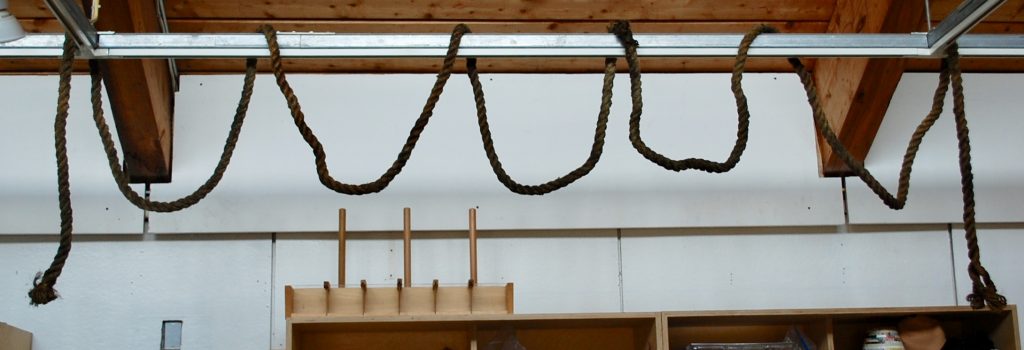
Josie notices the rope hanging in the classroom. At meeting time she wonders, Why is that rope up there?
Stella There’s two ropes. It has an end.
We then pass an identical rope around the circle.
Ellie It smells like a crocodile.
Then we sing…
How can children turning three, who make sense of the world through movement and touch, experience the museum in a meaningful way?
The current Sheila Pepe exhibit uses dangling rope and shoelaces that cry out to be touched. We responded by introducing rope and shoelaces to the classroom, and in an earlier post you saw children wrapping and decorating with shoelaces (attached to the lacing circles) in Studio Blue. This week we offered a big, thick rope to feel (and smell!). So we’re exposing them to the materials similar to those in the exhibit, inviting the children to notice how they feel and how they work as tools.

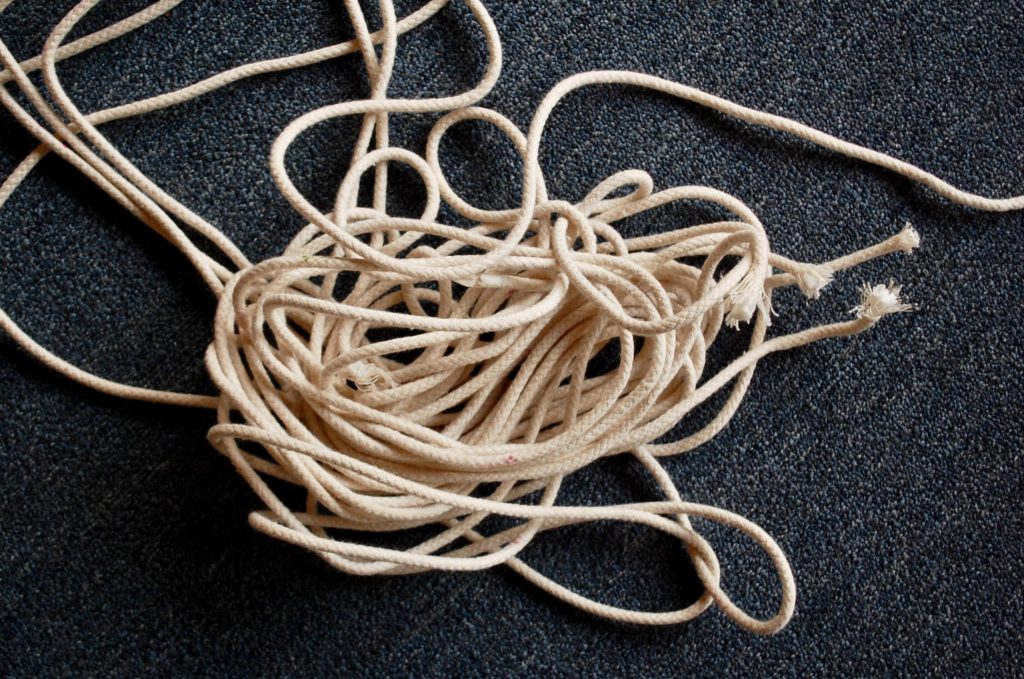

On Thursday, Mark takes Lila, Henry and Ellie to the museum. They go by way of the Lincoln sculpture, and there Mark hands out long lengths of rope to weave back and forth through the big tubes as they run through. Again, the goal is to interact physically with a material similar to what is in the exhibit, allowing them to identify with, and even empathize with, the exhibit itself without touching it.

From there, they walk up Alice’s Garden to the back door of the museum. There, Mark exchanges their rope for lengths of golden yarn. In the process, Ellie notices the exhibit in the Linde Gallery: It looks like a spiderweb. That looks like a spiderweb that sticks.
They climb the stairs to the Lab and drape their yarn over the complex creation constructed by visitors, then engage in other activities there…




…then it’s on to the exhibit across the hall.
Henry: Spiderweb.
Ellie: It’s a little crowded in here.
After coming back downstairs, they notice golden strings overhead – too high to reach! Henry says Somebody need pick us up. Lila says, We could reach… and jumps up and down, suggesting with her body that they may have to jump up to reach it, and all three children jump up and down for a bit.

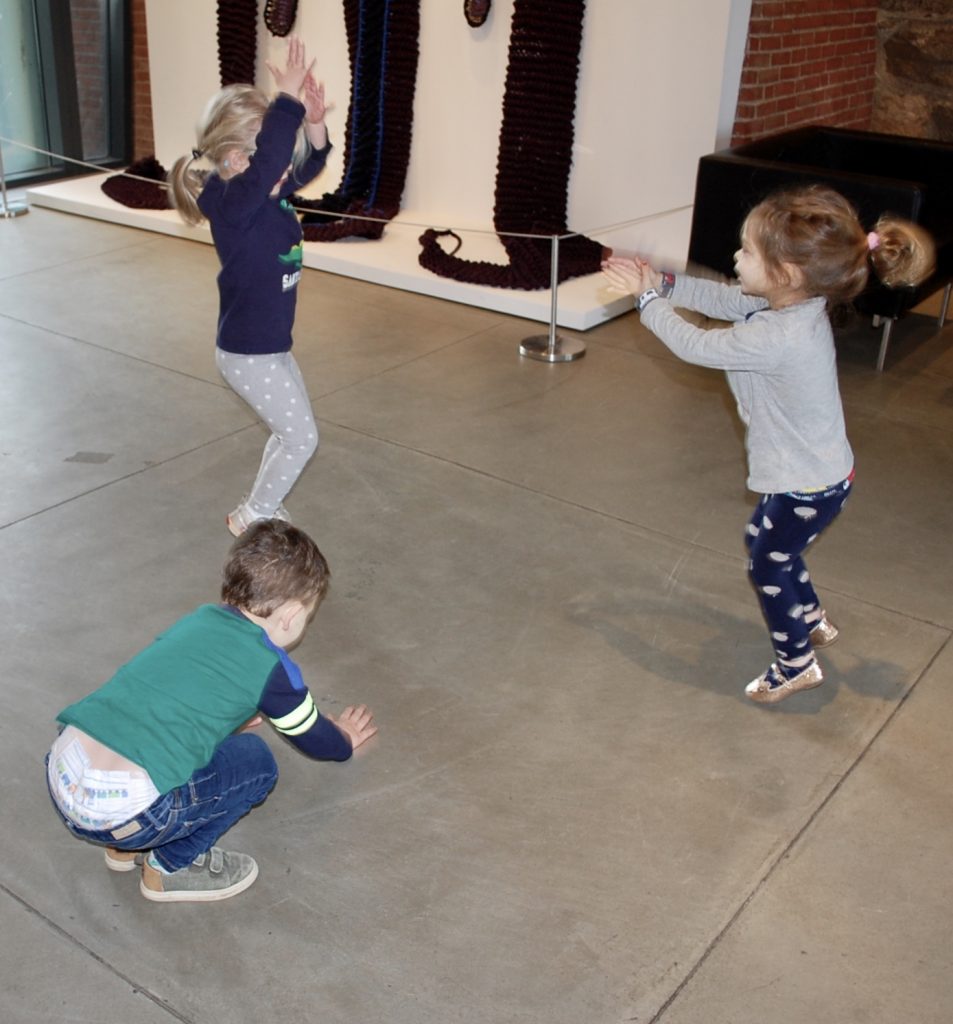

Mark asks What do these make you think of?
I think they’re pictures, says Ellie.
I think them pictures, too, agreeds Henry.
Look at this, says Lila, holding up a small blue foam piece that she had drawn on in the Lab.
This is a picture.
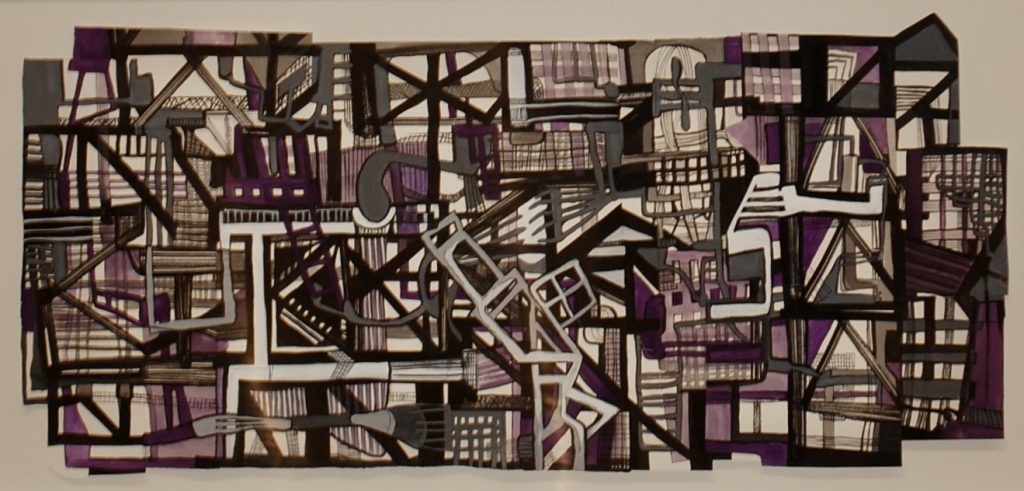
That’s a building, says Henry.
They watch a video of meatballs being made (by Sheila!) and then take the elevator down.

Then they stroll through the Linde gallery. This is beauuuutiful, Henry says, referring to a piece strung overhead between the walls.
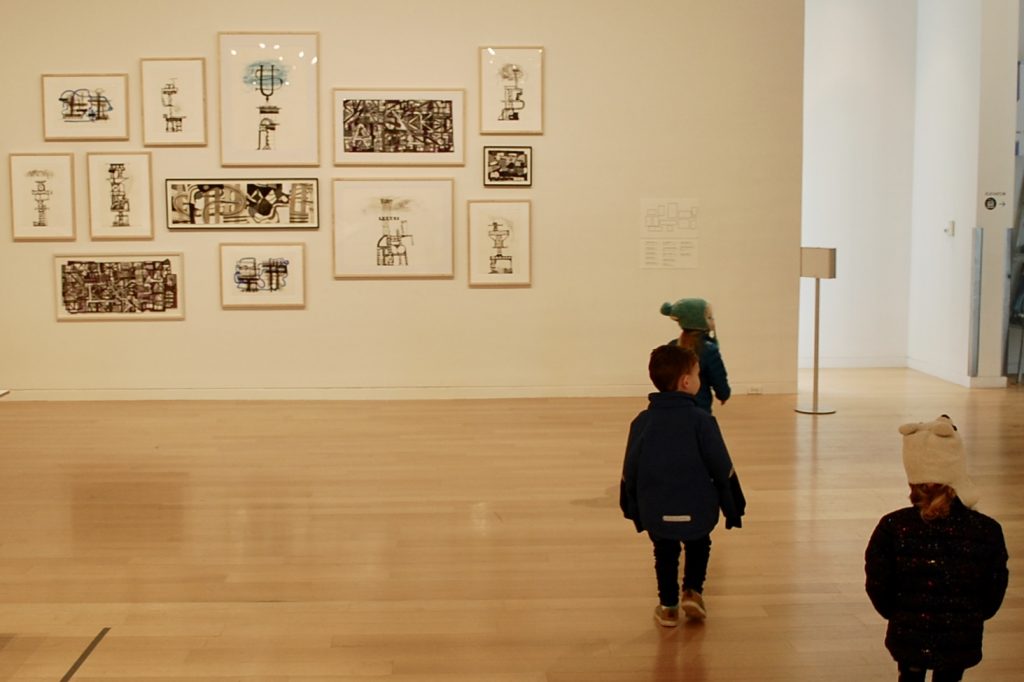
That’s a humongous building, says Ellie.
